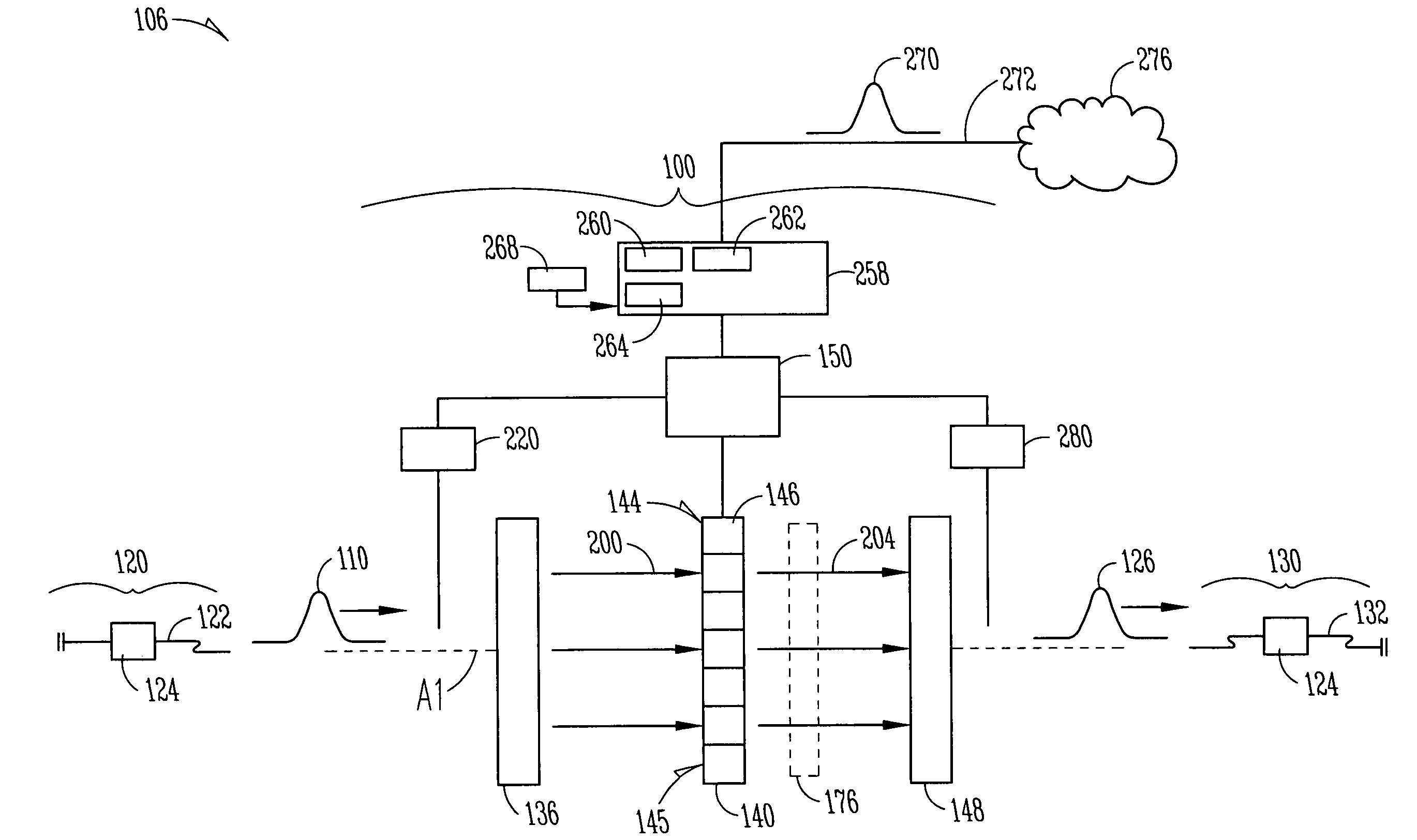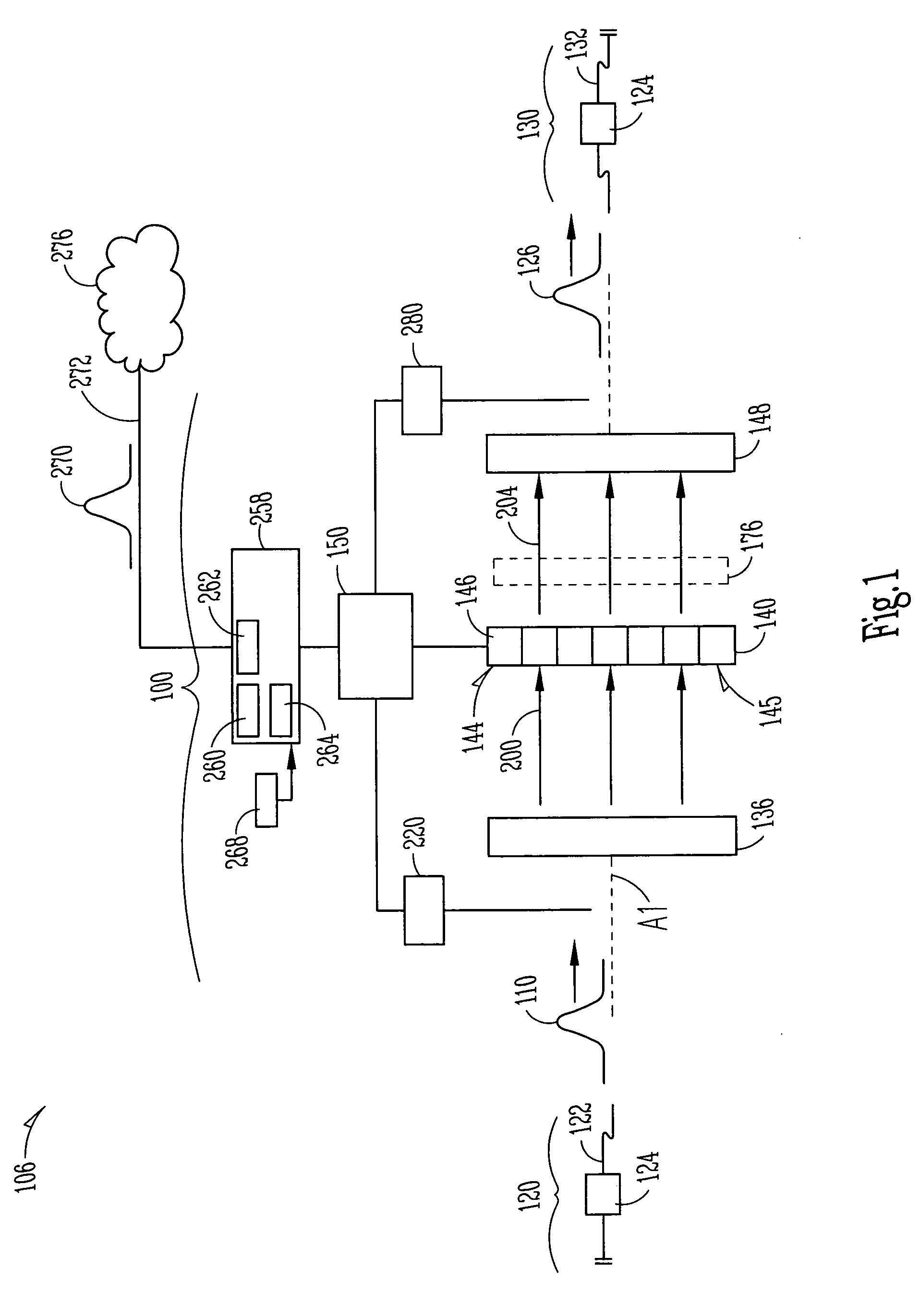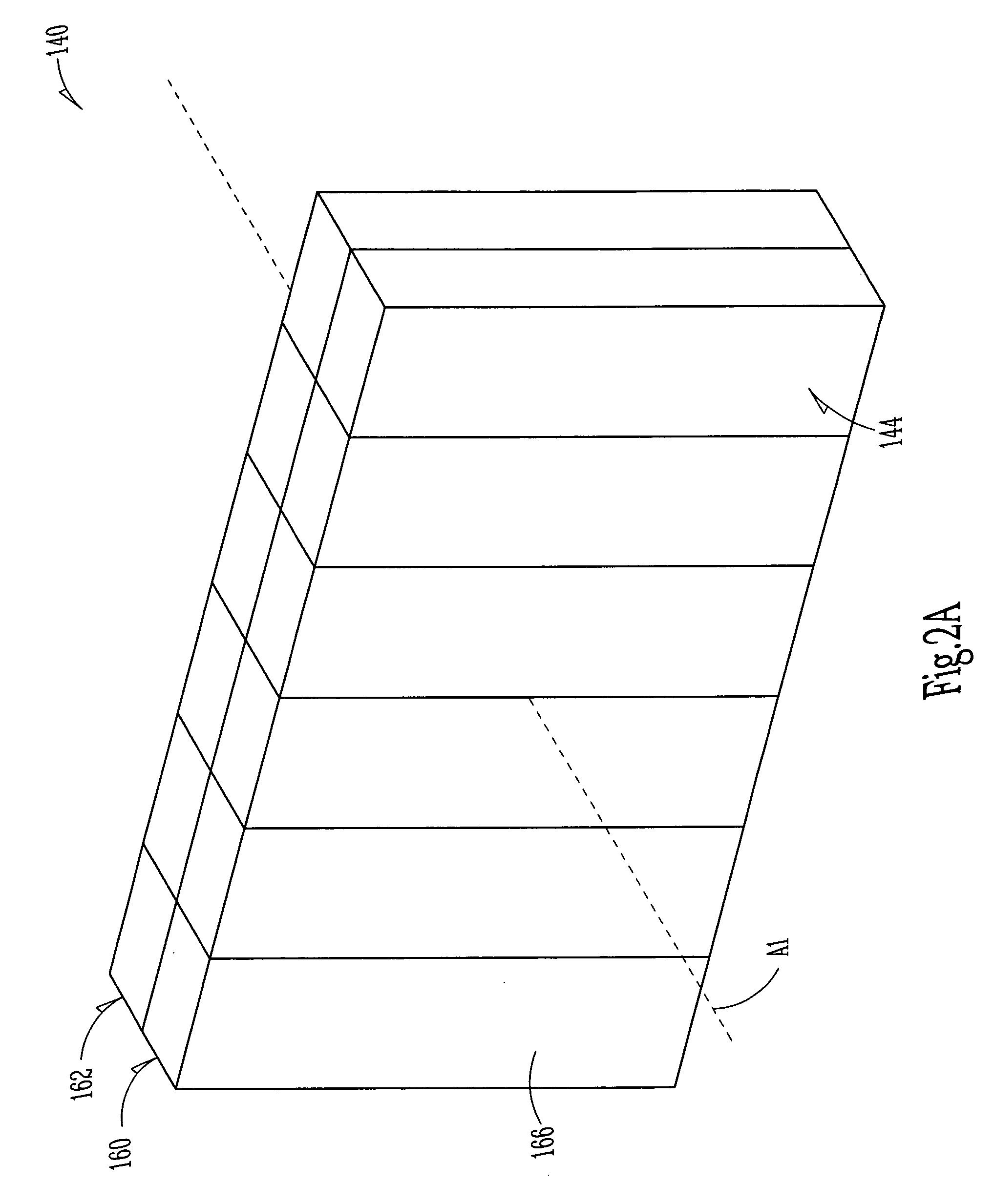System and method for programmable polarization-independent phase compensation of optical signals
a phase compensation and optical signal technology, applied in the field of optical communication and the processing of optical signals, to achieve the effect of correcting, reducing or otherwise adjusting the chromatic dispersion of optical signals
- Summary
- Abstract
- Description
- Claims
- Application Information
AI Technical Summary
Benefits of technology
Problems solved by technology
Method used
Image
Examples
example embodiments
[0068] As mentioned above, there are many specific examples of system 100 of FIG. 1. Several of these examples are described below for the sake of illustration, and one skilled in the art will appreciate that the examples provided in no way limit the general teaching of the chromatic dispersion compensation system of the present invention.
Transmission System with Liquid Crystal PI-SLM and Diffraction Gratings
[0069] Referring now to FIG. 3, a first exemplary embodiment of system 100 is shown. In this embodiment, first dispersive module 136 includes a first grating 300 for receiving optical signal 110 and angularly dispersing its frequency components 200, and a first lens 306 having a focal length F1 for collimating the angularly dispersed frequency components and focusing them onto a liquid-crystal-based PI-SLM 140, and in particular onto first and second arrays 160 and 162 of elements 166 (FIG. 2A)
[0070] Optical signal 110 emanates from the end of an output optical fiber 122 as ...
PUM
| Property | Measurement | Unit |
|---|---|---|
| aperture size | aaaaa | aaaaa |
| aperture size | aaaaa | aaaaa |
| length | aaaaa | aaaaa |
Abstract
Description
Claims
Application Information
 Login to View More
Login to View More - R&D
- Intellectual Property
- Life Sciences
- Materials
- Tech Scout
- Unparalleled Data Quality
- Higher Quality Content
- 60% Fewer Hallucinations
Browse by: Latest US Patents, China's latest patents, Technical Efficacy Thesaurus, Application Domain, Technology Topic, Popular Technical Reports.
© 2025 PatSnap. All rights reserved.Legal|Privacy policy|Modern Slavery Act Transparency Statement|Sitemap|About US| Contact US: help@patsnap.com



